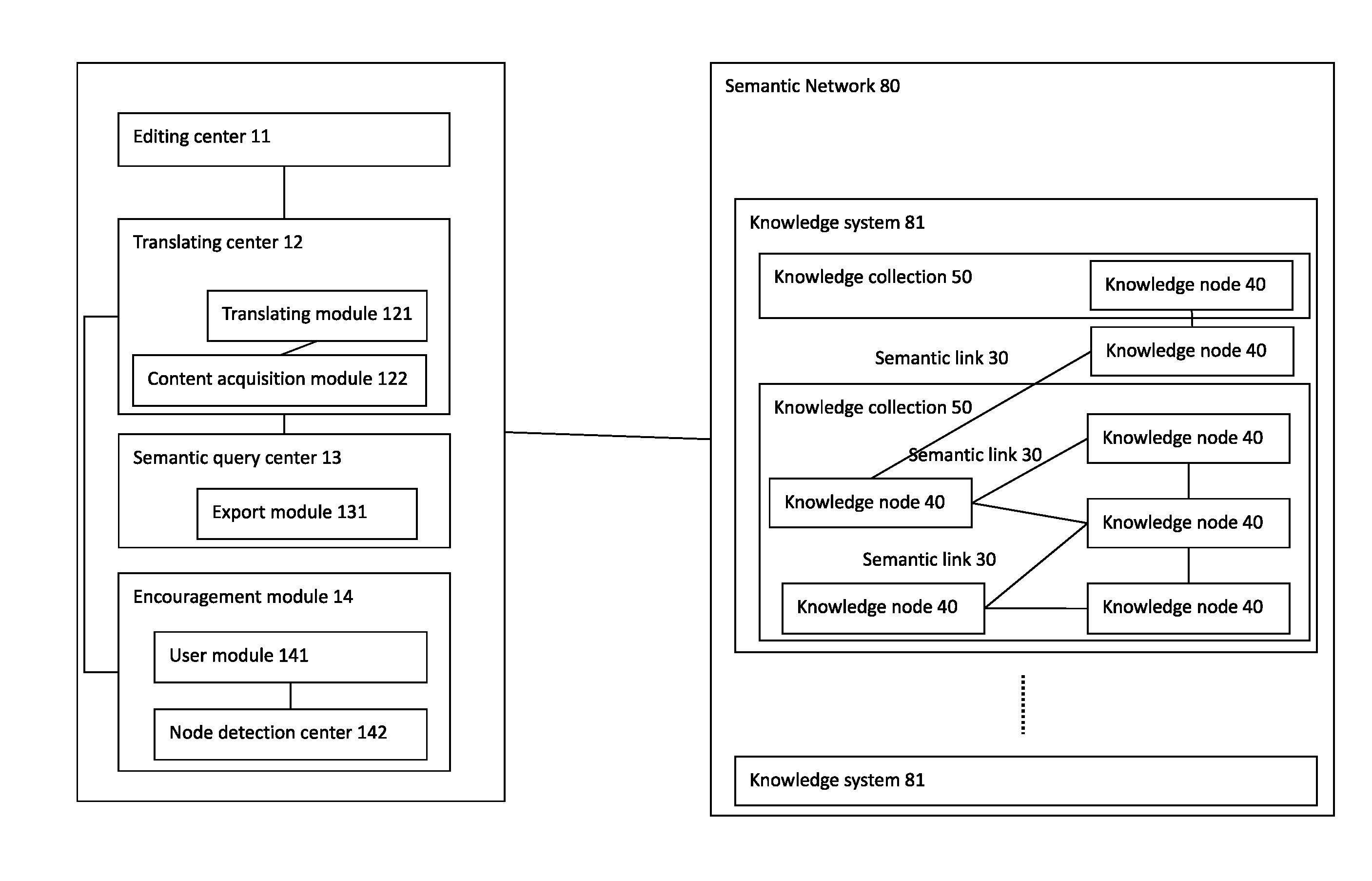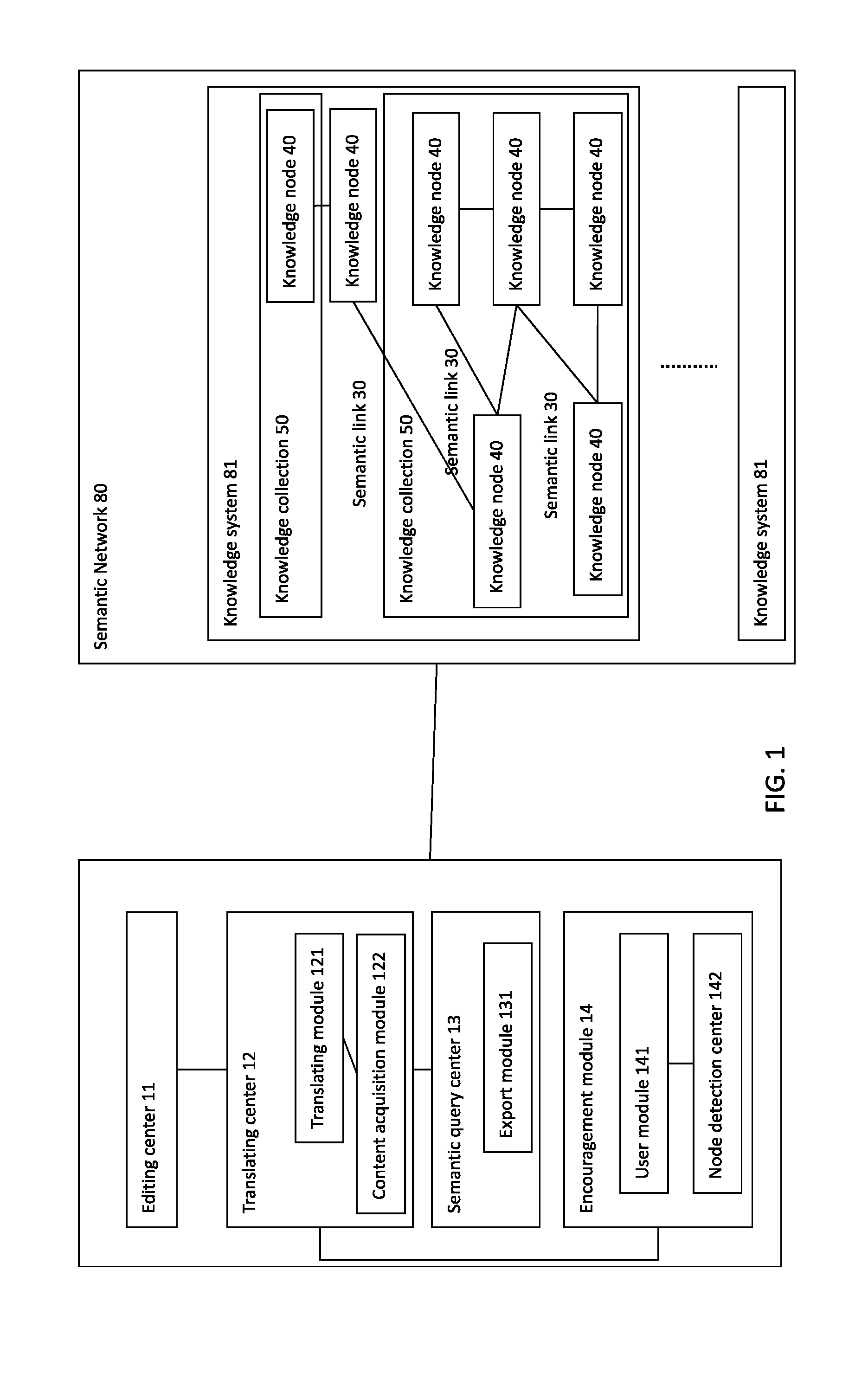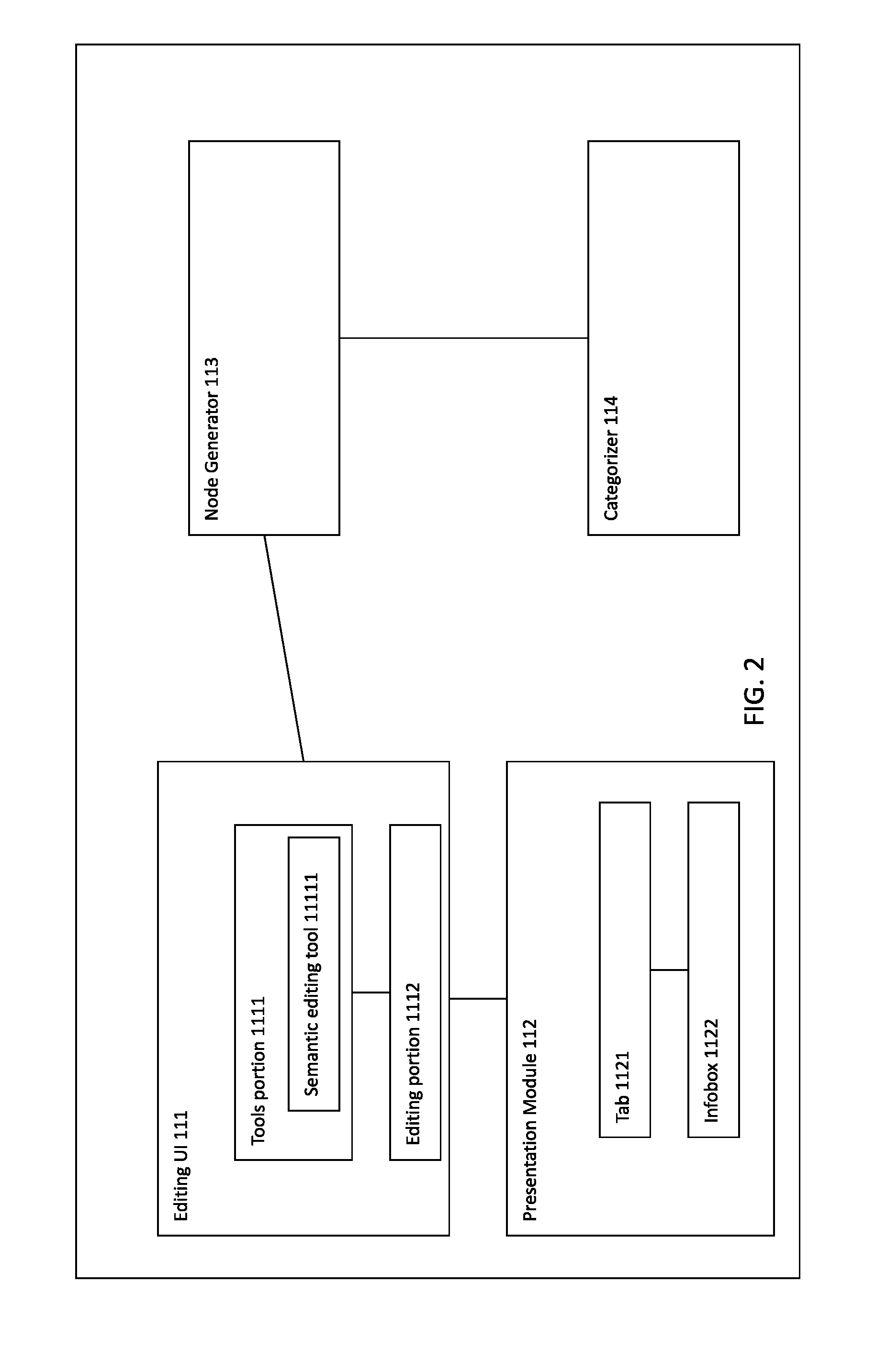Semantic Network Establishing System and Establishing Method Thereof
a network and network technology, applied in the field of knowledge systems, can solve the problems of wikipedia not being able to give any paragraph editor any reward, honor or recognition, and wikipedia not being able to provide a way for users,
- Summary
- Abstract
- Description
- Claims
- Application Information
AI Technical Summary
Benefits of technology
Problems solved by technology
Method used
Image
Examples
Embodiment Construction
[0055]The following description is disclosed to enable any person skilled in the art to make and use the present invention. Preferred embodiments are provided in the following description only as examples and modifications will be apparent to those skilled in the art. The general principles defined in the following description would be applied to other embodiments, alternatives, modifications, equivalents, and applications without departing from the spirit and scope of the present invention.
[0056]Referring to FIG. 1, a semantic network establishing system of the preferred embodiment of the present invention is illustrated. The semantic network establishing system comprises an editing center 11 and a translating center 12. The editing center 11 communicatively connects with the translating center 12. The editing center 11 allows an editor to edit a semantic relationship. Preferably, the editing center 11 is capable of editing a semantic link 30. The translating center 11 translates t...
PUM
 Login to View More
Login to View More Abstract
Description
Claims
Application Information
 Login to View More
Login to View More - R&D
- Intellectual Property
- Life Sciences
- Materials
- Tech Scout
- Unparalleled Data Quality
- Higher Quality Content
- 60% Fewer Hallucinations
Browse by: Latest US Patents, China's latest patents, Technical Efficacy Thesaurus, Application Domain, Technology Topic, Popular Technical Reports.
© 2025 PatSnap. All rights reserved.Legal|Privacy policy|Modern Slavery Act Transparency Statement|Sitemap|About US| Contact US: help@patsnap.com



